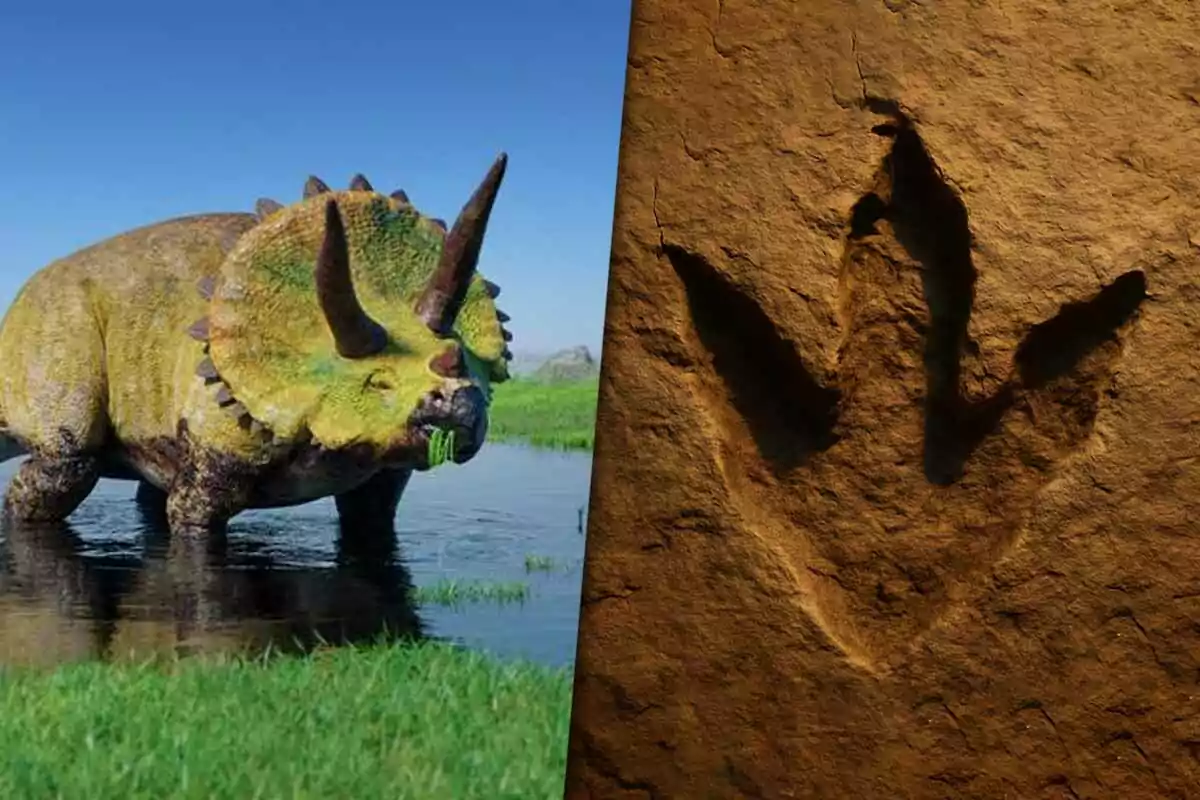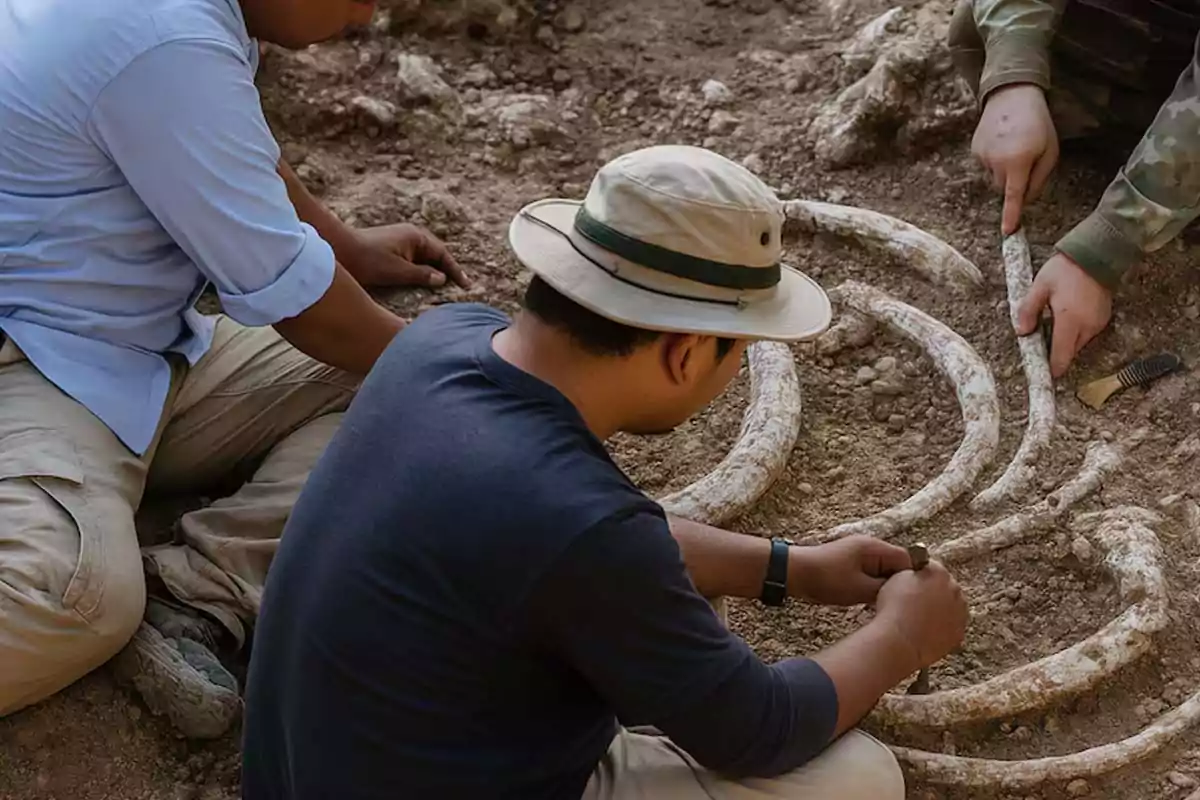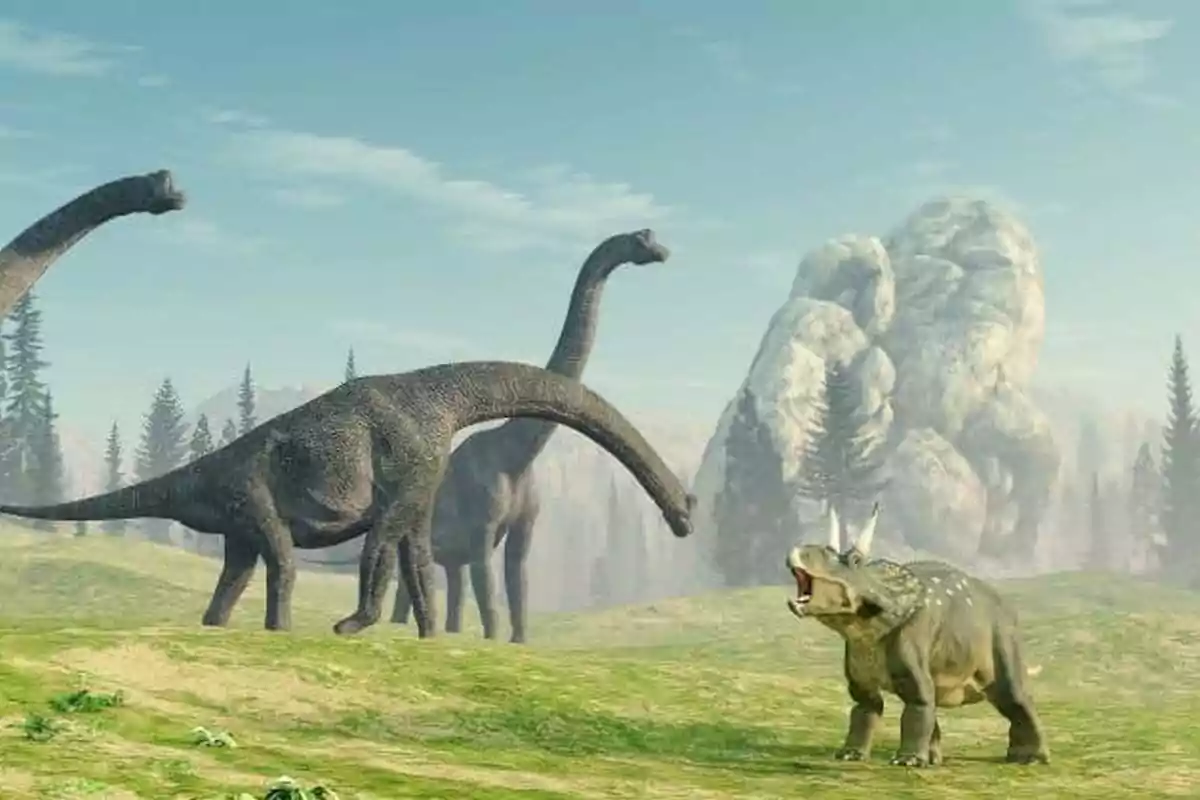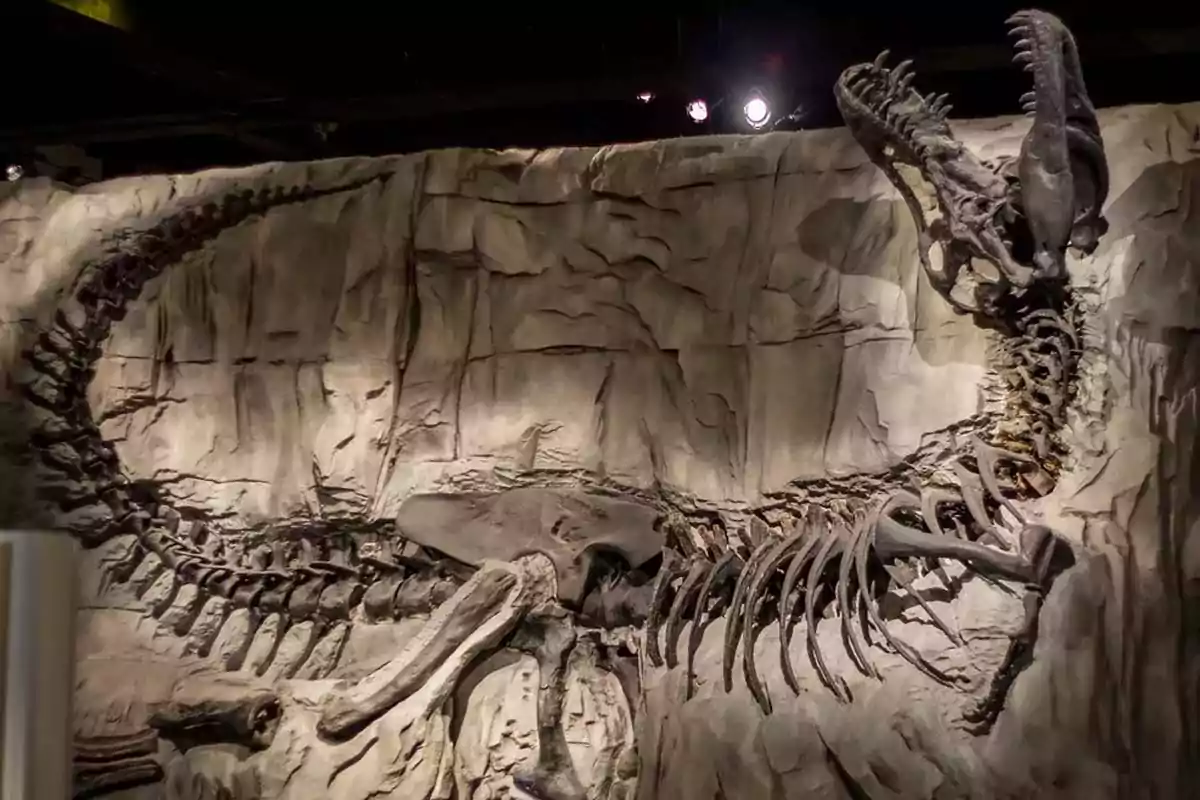
Unprecedented: Fossil footprints reveal that different dinosaur species grazed together
A site in Canada shows for the first time dinosaurs from different species walking together as a herd
Researchers in Canada have discovered tracks of at least five dinosaurs (such as Styracosaurus and Chasmosaurus), a possible ankylosaur, two tyrannosaurids, and a small carnivorous theropod. The tracks show that different species walked together, as if they were a single herd.
These well-preserved footprints mark a joint movement 76 million years ago, according to researchers detailed in the journal PLOS One.

What does the arrangement of the tracks indicate?
The ceratopsids walked in parallel, with the ankylosaur among them, which suggests a coordinated and possibly gregarious march.
The tyrannosaurid tracks crossing paths could imply a group defensive strategy against predators.
A prehistoric grazing scene
Scientists compare this behavior to that of modern mammals, such as elephants or buffalo, which share space and resources.

The finding challenges the idea that each species moved in isolation.
How was the discovery made?
The excavated area measures 29 square meters (312 square feet) and was studied using photogrammetry, manual mapping, and differential GPS. The tracks are on a 10 cm (3.9 inches) layer of hardened mud, the result of an ancient abandoned river channel.
What did scientists say about this finding
Brian Pickles, from the University of Reading, said: "It was exciting to follow in the footsteps of the dinosaurs 76 million years later."

Phil Bell, meanwhile, stated that the abundance of tracks was something science had overlooked until now.
The impact goes beyond the specific finding
Caleb Brown, from the Royal Tyrrell Museum, highlighted that this site offers new ways to study species interaction.
The tracks could become key to understanding how herbivorous dinosaurs lived and protected themselves.

What hypotheses does this finding suggest?
The evidence suggests mixed grazing as a regular social behavior and a possible strategy against predators.
The lack of forelimb tracks was also explained by the pressure of the body and the overlapping of the hind limbs.
More posts: